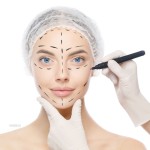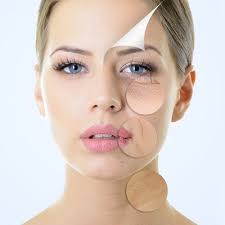Juvederm Treatment in Abu Dhabi, has become increasingly popular as people seek ways to combat the signs of aging and enhance their natural beauty. Among the various options available, dermal fillers have gained significant attention for their ability to restore volume, reduce wrinkles, and rejuvenate the face without the need for surgery. Juvederm is one of the leading brands in the world of dermal fillers, but how does it compare to other fillers on the market? In this article, we'll explore the differences between Juvederm and other fillers, helping you make an informed decision about your facial rejuvenation journey.
Understanding Dermal Fillers
Dermal fillers are injectable substances used to plump up the skin, smooth wrinkles, and restore volume to areas of the face that have lost elasticity and fullness over time. These fillers typically contain ingredients such as hyaluronic acid, calcium hydroxylapatite, or poly-L-lactic acid, which are naturally found in the body or are biocompatible.
Juvederm: A Leader in Dermal Fillers
Juvederm is a brand of hyaluronic acid-based dermal fillers known for their smooth consistency and long-lasting results. They are FDA-approved and come in various formulations designed to target specific areas of the face, such as the cheeks, lips, and nasolabial folds. Juvederm fillers provide immediate volume enhancement and can last anywhere from six months to two years, depending on the formulation used.
Other Fillers on the Market
While Juvederm is a popular choice for facial rejuvenation, there are other fillers available that offer similar benefits. Some of the most common alternatives include:
- Restylane: Like Juvederm, Restylane is a hyaluronic acid-based filler that can improve facial volume and reduce the appearance of wrinkles. It comes in various formulations, including Restylane Lyft for cheek augmentation and Restylane Silk for lip enhancement.
- Radiesse: Radiesse is a calcium hydroxylapatite-based filler that stimulates collagen production and provides immediate volume correction. It is often used to treat deeper wrinkles and folds, such as nasolabial folds and marionette lines.
- Sculptra: Sculptra is a poly-L-lactic acid filler that works by stimulating the body's natural collagen production. It is typically used to restore volume to areas of the face that have lost fat due to aging, such as the cheeks and temples.
Choosing the Right Filler for You
When deciding between Juvederm and other fillers, it's essential to consider factors such as your aesthetic goals, the area of treatment, and your individual skin type and anatomy. Here are some key considerations to keep in mind:
- Treatment Area: Certain fillers may be better suited for specific areas of the face. For example, Juvederm Volbella is designed for lip augmentation, while Restylane Lyft is ideal for cheek enhancement.
- Duration of Results: Different fillers have varying longevity, ranging from several months to a couple of years. Consider how long you want your results to last and choose a filler accordingly.
- Cost: The cost of treatment can vary depending on the type of filler used and the amount required for optimal results. Discuss pricing and payment options with your provider before undergoing treatment.
- Provider Experience: Choose a qualified and experienced injector who is familiar with the nuances of each filler and can recommend the most appropriate option based on your unique needs.
Conclusion
Juvederm and other fillers offer safe and effective solutions for facial rejuvenation, helping individuals achieve a more youthful and refreshed appearance without surgery. By understanding the differences between Juvederm and alternative fillers, you can work with your provider to choose the best option for your desired outcome and embark on your journey to renewed confidence and beauty.






Comments